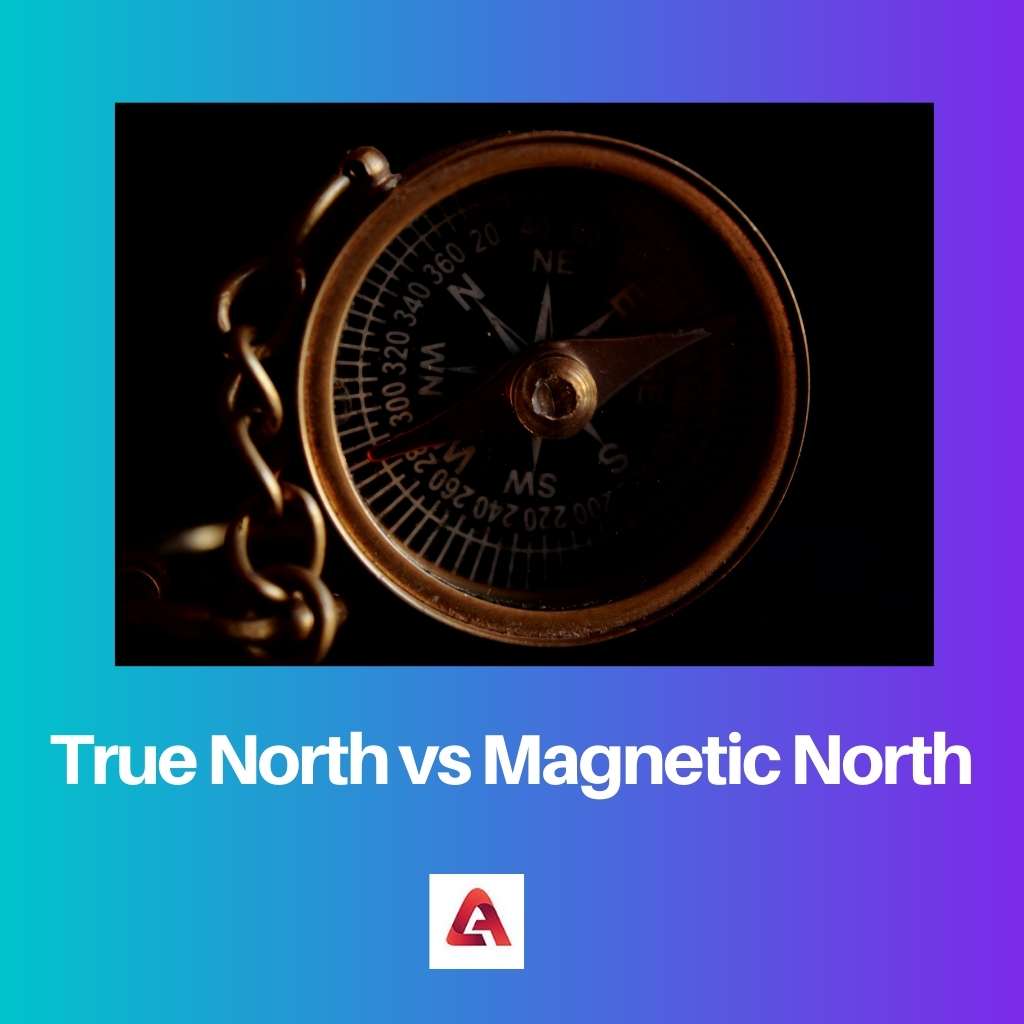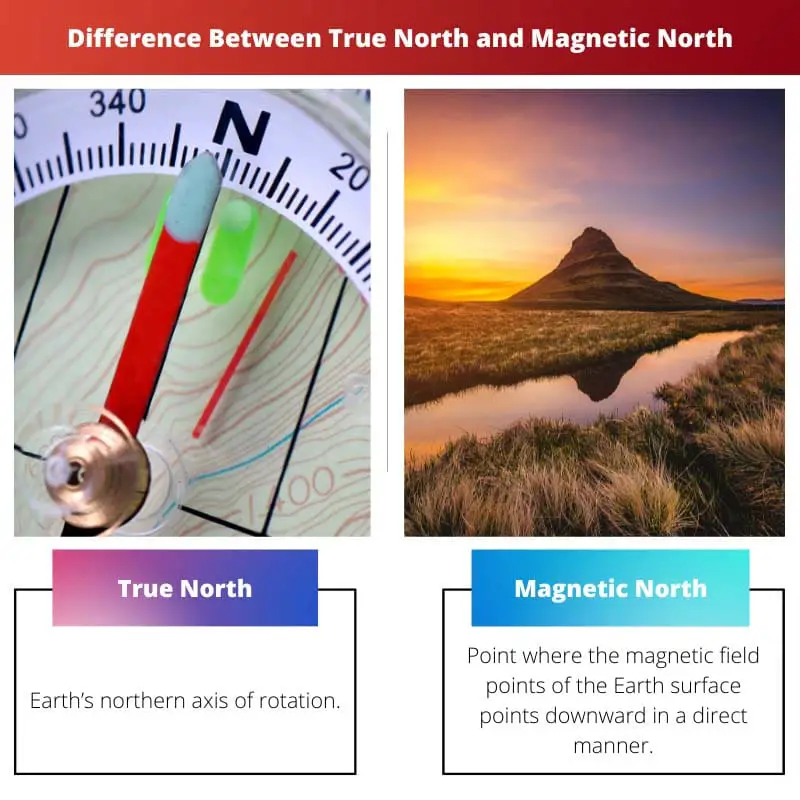It is possible to ascertain the true North’s direction of existence using geographical maps. When making new maps, true North is used. The appropriate declination information is also included in the maps.
On the globe, magnetic North cannot be determined or spotted; it is a whole distinct phenomenon. A compass needle is necessary to determine the direction of the magnetic North.
The magnetic North can be found by looking at how the compass needle aligns with the Earth’s magnetic field.
Key Takeaways
- True north is the geographic North Pole, while magnetic north is the direction a compass needle points to.
- True north does not change, while magnetic north shifts over time.
- Magnetic declination is the angle between true north and magnetic north and varies depending on the location on the earth’s surface.
True North vs Magnetic North
The difference between true North and magnetic North is that the Earth’s northern axis of rotation is known as true North. The convergence point of all longitude lines can be seen on the map. The magnetic North refers to that particular point on the surface of planet Earth where the ends of the field of magnetism are directed downward. This is known to be adaptable. A iron-based molten core and so magnet can be used to identify magnetic North.

True North is a fixed point on the planet, located at the north pole. Geographic maps can be used to discover the actual North’s direction of existence. True North is used for making new maps.
Because True North is a fixed location on the ground, it lacks flexibility. The maps include important declination information.
True North is more of a theoretical term, yet it is widely used in physics, geography, and by hikers and sailors.
Magnetic North cannot be determined or seen globally; it is a distinct phenomenon. A compass needle is needed to determine the magnetic north direction.
The magnetic North can be observed by calculating the value or measurement of the alignment of the compass’s needle with the magnetic field of Earth.
Magnetic North is used in the manufacturing of compasses and the development of compass applications in electronic devices.
Comparison Table
| Parameters of Comparison | True North | Magnetic North |
|---|---|---|
| Refers to | Earth’s northern axis of rotation | It cannot be determined |
| Approach | Theoretical | Practical |
| Use | In physics, geography and by sailors and hikers | Every layman |
| Determined by | Globe, maps | Compass |
| Flexibility | Less flexible | More flexible |
| Globe | Can be determined | Can not be determined |
What is True North?
The use of true North can be apparent when new maps are being created. The relevant information about the declination is also included in the maps.
True North is more of a theoretical term, yet it’s widely used in physics, geography, and by hikers and sailors.
True North can be seen as a fixed point on the globe at the north pole. Using geographical maps makes it possible to discover the actual North’s direction of existence.
The axis of rotation, which is placed in the northern hemisphere of the planet Earth, is referred to as “true north”. The point of intersection of all lines of longitude may be seen on the map at this place.
True North does not have enough flexibility because it is an actual position on the ground that can be pinpointed.
What is Magnetic North?
Magnetic North is used in the manufacture of compasses and the development of compass applications in electronic devices.
Magnetic North is more of a practical approach; any regular layperson would need to know where magnetic North is to understand other existing directions.
On the planet, magnetic North cannot be determined or spotted; it is different. A compass needle is necessary to decide on the magnetic north direction.
The magnetic North can be calculated by observing and studying in-depth the measure of alignment of the compass’s needle with the magnetic field possessed by Earth.
“Magnetic north” is referred to as the point on the surface of Earth where the field of magnetism points downward directly. Magnetic North is known to be quite adaptable.
A molten core, which is iron-based and so magnetic, can be used to identify magnetic North.
Main Differences Between True North and Magnetic North
- True North is referred to as the Earth’s northern axis of rotation. At this point, the convergence point of all the lines of longitude can be seen on the map. On the other hand, magnetic North refers to that point where the magnetic field points of the Earth’s surface points downward in a direct manner.
- As true North is a real place on the land, which is pinpointed, therefore true North does not possess enough flexibility. On the other hand, Magnetic North is known to possess enough flexibility. Magnetic North can be determined with the help of a molten core which is iron-based and thus magnetic.
- On the globe, the point of true North is stationary and immovable, which is placed at the northern pole. However, on the contrary, the determination of magnetic North on the globe is a highly challenging task. It is quite different.
- The determination of the direction of the existence of the true North is possible with the use and help of maps that possess information on the geography of the earth. On the other hand, the determination of the direction of the magnetic North is done via a needle of the compass needle. Studying the alignment of the compass needle with the magnetic field of Earth, the magnetic North can be determined.
- The use of true North is seen at the time of the creation of new maps. In the maps, necessary information related to the declination is also provided. On the other hand, the use of Magnetic North can be seen while manufacturing compasses or building applications related to compass in electronic devices.
- True North is more like a theoretical concept. Its use is extensive in the areas of physics and geography and also by the hikers and sailors. On the other hand, magnetic North is more like a practical approach. Every ordinary layman would need to have an idea of the magnetic north direction to have a clear idea of other existing directions.





